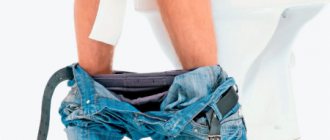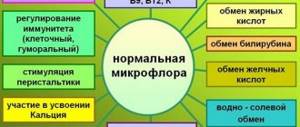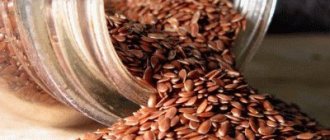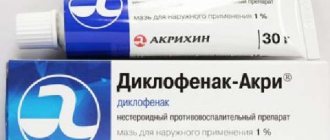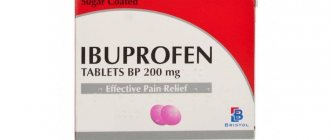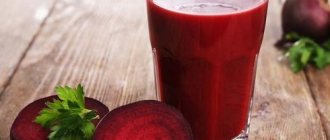Indications for use of Noshpa for the stomach
“Noshpa” should be used in the following cases:
- increased level of acidity of gastric juice (causes pain and discomfort in the stomach);
- gastritis (chronic/acute);
- poisoning caused by eating poor quality food;
- stress cramps in the stomach;
- ulcer;
- constipation, which causes pain in the stomach and anus;
- inflammatory processes of the gastrointestinal tract;
- mechanical damage to the mucous membranes of the gastrointestinal tract;
- pancreatitis.
Let's sum it up
Problems with the stomach or intestinal tract are the most common diseases of the current generation of people. Every second person on earth knows what poisoning is, stomach pain from overeating or malnutrition from personal experience. Ignoring problems of the gastrointestinal tract is more than dangerous, since minor troubles can develop into serious diseases.
The drug "No-shpa" is the most common drug used in the treatment of the gastrointestinal tract, but its abuse can cause serious health problems. Use medications only as needed and according to the instructions for use, and consult a doctor if you have any health problems. Correct diagnosis and treatment guarantee recovery.
- Is it possible to drink noshpa for pancreatitis?
- How long before you can drink Nolicin and alcohol?
- If you have diabetes, you can drink vodka
- Is it possible to take aspirin with a hangover?
No-Spa drug for abdominal pain - description
Effective antispasmodic drugs can have a beneficial effect on various organ systems.
The drug no-spa, which is often used for regular female pain, can also relieve the symptoms of many diseases of the gastrointestinal tract.
The medicine is sold in pharmacies without a prescription, but it is still highly advisable to consult a doctor regarding its use.
What is no-spa intended for? Typically indications for use are:
- cholecystitis;
- cystitis;
- tension headaches;
- dysmenorrhea (heavy menstruation);
- cramp-like abdominal pain due to gastritis, gastric or duodenal ulcers;
- spastic colitis with constipation;
- pancreatitis.
The main contraindications are hypersensitivity to the components, liver, heart and kidney failure. During pregnancy and lactation, no-shpa can be drunk only with great caution - a risk to the baby’s life cannot be ruled out.
These tablets should not be given to children under 6 years of age at all. There have been no clinical studies that would allow an objective assessment of the effect of the drug on the children's body.
Useful tips
- Self-medication is the enemy of our health. Only a specialist can make the correct diagnosis of diseases and prescribe effective treatment. Before taking any medications, consult a doctor.
- “No-spa” is an effective antispasmodic drug, but it must be taken with great caution, as it has side effects that can cause a deterioration in the patient’s condition.
- Gastritis is a serious disease of the gastrointestinal tract, which, if ignored, can develop into a chronic form, stomach ulcer or even cancer.
- Although “No-spa” has indications for the treatment of gastritis, it must be taken with caution in case of gastritis with high acidity, since the removal of spasm does not mean stabilization of the Ph level, which continues to irritate the mucous membrane even after the pain has decreased and, in the absence of proper treatment, leads to recurrence of the disease in a more aggressive form.
Directions for use for pain
The dosage of the drug depends on the age criterion, the nature of the pain, its duration and the strength of the effect. The most optimal is the individual selection of an anesthetic by a qualified specialist. If you cannot see a doctor, remember the following:
- “No-spa” is taken orally, washed down with liquid, which will help the tablet enter the stomach;
- Do not take the medication on an empty stomach (more than 20 minutes should pass after the last meal);
- the maximum amount of painkiller (regardless of dosage) is 300 mg.
- “No-spa” is taken orally, washed down with liquid, which will help the tablet enter the stomach;
- Do not take the medication on an empty stomach (more than 20 minutes should pass after the last meal);
- the maximum amount of painkiller (regardless of dosage) is 300 mg.
Use during pregnancy/lactation
If a pregnant/lactating woman has a stomach ache, it is permissible to take “Noshpa” in the amount of 2 tablets per day. The time frame for such treatment should not exceed 3 days. It is advisable that the woman consult with her doctor, since pain may indicate more serious disorders in the body that can be dangerous for the baby.
If your stomach hurts after taking the maximum allowable dose of the drug, you should contact an ambulance, stop eating food and do not exercise.
Duspatalin and pancreatitis
Pain during inflammation of the pancreas can be pressing, burning, boring, and have a different location. "Duspatalin" for pancreatitis is used to eliminate pain of varying intensity that accompanies this disease. In this case, the medication relieves spasms and alleviates the patient’s condition, but it is recommended to use it as prescribed by a doctor and strictly, adhering to the prescribed dosage.
Duspatalin can be used to relieve pain in the gastrointestinal tract due to pancreatitis.
- 1 Composition of the medicine
- 2 Release form
- 3 How does it work?
- 4 Indications and contraindications for the use of Duspatalin for pancreatitis
- 5 How to take?
- 6 Overdose
- 7 Combination with other drugs
- 8 Analogue drugs
Composition of the medicine
The drug "Duspatalin", which is a potent antispasmodic, contains mebeverine as an active substance, as well as the following auxiliary components:
- magnesium stearate;
- potato starch;
- lactose monohydrate;
- sucrose;
- talc;
- triacetin;
- ammonia, aqueous;
- propylene glycol;
- potassium hydroxide;
- titanium dioxide
How to use?
A universal antispasmodic drug, such as No-shpa, can be prescribed to both adults and children over the age of six. The tablets are taken by swallowing, without chewing, with a sufficient amount of water. Drotaverine, which is the main active ingredient of the drug, has extremely high bioavailability, reaching almost 100%. This means that almost immediately after administration, a pronounced antispasmodic effect develops, which is important for relieving pain and spastic syndrome.
No-spa refers to pharmaceutical drugs that have a fairly high degree of safety, subject to compliance with the dosage regimen and permissible doses:
- The maximum permissible pediatric dose for patients aged 6 to 12 years is 80 mg (two tablets) per day.
- Adolescents over 12 years of age are not recommended to take more than 160 mg/day, or 4 tablets. It is advisable to divide the dose of the medicine into 2 times, setting equal intervals between doses.
- Adults No-shpu are prescribed no more than 240 mg, or six tablets per day, divided into 2-3 doses. The optimal regimen is 2 tablets/day every 8 hours.
Despite the fact that the drug has low toxicity and good tolerability, it is strictly not recommended to exceed the indicated dosages due to the likelihood of developing unwanted side effects.
No-spa as a first aid remedy
In the vast majority of cases, the drug is used by patients as a means of quickly responding to spastic pain syndrome. Similar situations arise when acute pain occurs due to:
That is why, in such acute situations, it makes no sense to debate whether to drink No-shpa before or after meals. However, it is necessary to understand that the duration of taking the drug in such situations should not exceed more than 1-2 days. If, after the specified period, severe pain persists, you should immediately seek qualified medical help.
The drug, while providing an analgesic effect, does not directly affect pain receptors. This important quality allows No-shpa to be prescribed in acute conditions, when taking conventional analgesics can erase the characteristic clinical picture and increase the likelihood of diagnostic errors.
No-spa as an integral part of drug therapy
Tablets can be prescribed by a doctor not for short-term use, but for a longer course. If prolonged use is expected as part of complex therapy for certain diseases, it should be borne in mind that the process of digesting food can slow down the absorption and distribution of the drug in the body. Therefore, No-shpa is prescribed before meals or no less than an hour after.
Some drugs can potentiate each other's effects when used together. Thus, the combination of No-shpa with other drugs with analgesic and antihistamine action helps to enhance the analgesic and antispasmodic effect.
Side effects
- nausea, vomiting;
- constipation;
- sleep disturbance;
- dizziness;
- a sharp decrease in blood pressure/increase in heart rate;
- an allergic reaction (most often dermatitis) caused by individual intolerance to the substances that make up Noshpa;
- increased sweating;
- difficulty breathing;
- strengthening of pathogenic effects that previously affected the body (up to cardiac arrest);
- edema.
- nausea, vomiting;
- constipation;
- sleep disturbance;
- dizziness;
- a sharp decrease in blood pressure/increase in heart rate;
- an allergic reaction (most often dermatitis) caused by individual intolerance to the substances that make up Noshpa;
- increased sweating;
- difficulty breathing;
- strengthening of pathogenic effects that previously affected the body (up to cardiac arrest);
- edema.
How to use?
A universal antispasmodic drug, such as No-shpa, can be prescribed to both adults and children over the age of six. The tablets are taken by swallowing, without chewing, with a sufficient amount of water. Drotaverine, which is the main active ingredient of the drug, has extremely high bioavailability, reaching almost 100%. This means that almost immediately after administration, a pronounced antispasmodic effect develops, which is important for relieving pain and spastic syndrome.
No-spa refers to pharmaceutical drugs that have a fairly high degree of safety, subject to compliance with the dosage regimen and permissible doses:
- The maximum permissible pediatric dose for patients aged 6 to 12 years is 80 mg (two tablets) per day.
- Adolescents over 12 years of age are not recommended to take more than 160 mg/day, or 4 tablets. It is advisable to divide the dose of the medicine into 2 times, setting equal intervals between doses.
- Adults No-shpu are prescribed no more than 240 mg, or six tablets per day, divided into 2-3 doses. The optimal regimen is 2 tablets/day every 8 hours.
Despite the fact that the drug has low toxicity and good tolerability, it is strictly not recommended to exceed the indicated dosages due to the likelihood of developing unwanted side effects.
No-spa as a first aid remedy
In the vast majority of cases, the drug is used by patients as a means of quickly responding to spastic pain syndrome. Similar situations arise when acute pain occurs due to:
That is why, in such acute situations, it makes no sense to debate whether to drink No-shpa before or after meals. However, it is necessary to understand that the duration of taking the drug in such situations should not exceed more than 1-2 days. If, after the specified period, severe pain persists, you should immediately seek qualified medical help.
The drug, while providing an analgesic effect, does not directly affect pain receptors. This important quality allows No-shpa to be prescribed in acute conditions, when taking conventional analgesics can erase the characteristic clinical picture and increase the likelihood of diagnostic errors.
No-spa as an integral part of drug therapy
Tablets can be prescribed by a doctor not for short-term use, but for a longer course. If prolonged use is expected as part of complex therapy for certain diseases, it should be borne in mind that the process of digesting food can slow down the absorption and distribution of the drug in the body. Therefore, No-shpa is prescribed before meals or no less than an hour after.
Some drugs can potentiate each other's effects when used together. Thus, the combination of No-shpa with other drugs with analgesic and antihistamine action helps to enhance the analgesic and antispasmodic effect.
Storage recommendations
“Noshpa” should be kept in a dark, dry place where room temperature is maintained. It is not recommended to subject it to mechanical stress, which may damage the integrity of the packaging.
Children's access to medications should be limited. The shelf life of “Noshpa” is 3 years.
“Noshpa” should be kept in a dark, dry place where room temperature is maintained. It is not recommended to subject it to mechanical stress, which may damage the integrity of the packaging.
Children's access to medications should be limited. The shelf life of “Noshpa” is 3 years.




